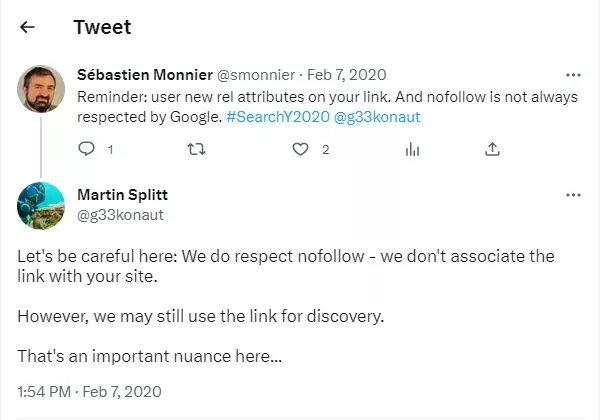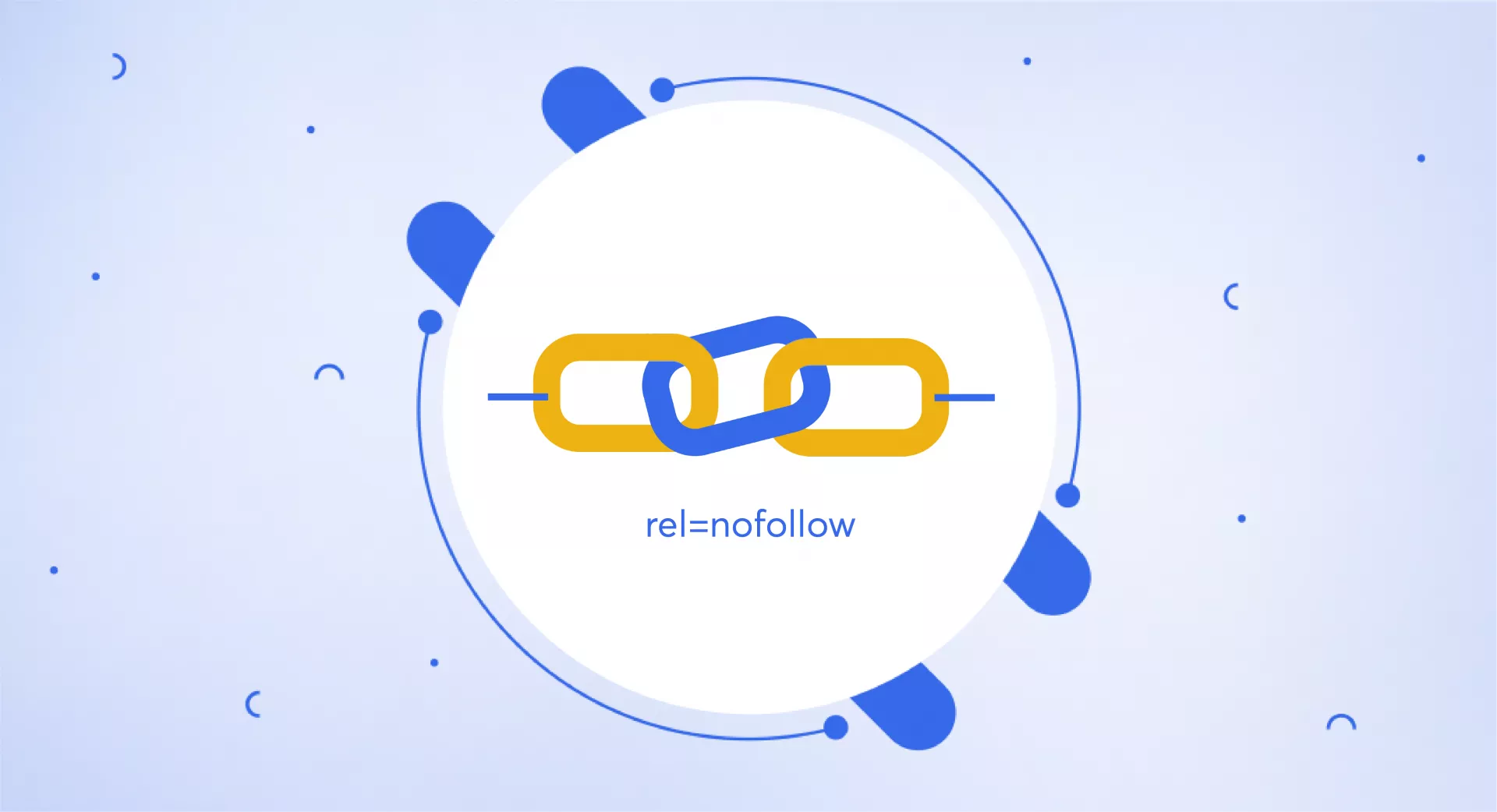What is a nofollow backlink?
A nofollow backlink is a type of hyperlink that includes a "rel=nofollow" attribute in its HTML code. This attribute tells search engines not to transfer any authority or PageRank to the website it links to.
Nofollow backlinks were introduced in 2005 as a way to combat link spam. Before this, webmasters primarily used dofollow (or follow) backlinks.
The purpose of a nofollow backlink is to signal to search engines that they should not perform certain actions (like crawling or passing value) on the linked page.
It is important to note that a nofollow backlink does not force a search engine to completely ignore the linked page, as the search engine might still consider the page relevant for user experience.
However, in general, search engines do not follow nofollow backlinks.
What are rel attributes?
The "rel" attribute stands for "relationship" and is used to describe the relationship between two linked pages.
It provides additional information to search engines about the nature and purpose of the backlink, which can help the search engine better understand and analyze the link.
Initially, the "nofollow" attribute was introduced to combat link spam. Later, other rel attributes - sponsored and ugc - were added to further specify the types of backlinks and the intentions behind them.
These additional attributes help search engines to better analyze backlinks and understand the purpose of the page they are pointing to.
The three attributes are:
rel=nofollow
This attribute hints to the search engine to avoid crawling and passing PageRank to the page it points to. It will appear in the HTML like this:
<a href="https://example.com" rel="nofollow">Click here</a>rel=sponsored
This attribute in HTML specifies a paid backlink or the one used for the sake of advertisement. It appears like this:
<a href="https://example.com" rel="sponsored">Click here to purchase this product</a>rel=ugc
UGC stands for user-generated content and refers to the content that users create rather than webmasters.
Usually, it is created by commenting on a post and giving a backlink to one’s content. It appears like this:
<a href="https://example.com" rel="ugc">Click here for more information!</a>These attributes can also be used in combination with others, such as nofollow, using either a space or a comma:
<a href="https://example.com" rel="nofollow ugc">Click here for more information!</a>Importance of nofollow backlinks
Although nofollow backlinks are taken as something insignificant in SEO, they can still be important.
Do not pass the link juice to everyone!
On the referring side, they are important because they do not let you pass any value to the page you are giving a backlink. By doing so, you can stop low-quality pages from taking your vote of confidence.
If you leave a backlink to a low-quality page without any attribute, it will be a follow backlink, which can lower your reputation.
Increase referral traffic!
On the receiving end, even if a search engine does not follow a link to your page due to the nofollow attribute, you can still receive referral traffic from the referring page.
This can increase the number of visitors to your page and improve its overall discoverability.
Is nofollow backlink a ranking factor?
Nofollow links do not pass PageRank or link equity to the linked page, which means that they do not directly impact the ranking of the linked page.
Google’s Martin Splitt tweeted:

The 2020 algorithm update changed the way nofollow links are treated for crawling and indexing purposes, but they still do not pass any link juice or provide additional ranking weight to the linked site.
Instead, nofollow links are simply a way to signal to search engines that the link should not be given additional weight in search rankings.
However, if other websites are linking to your site via inbound links, then these links can indirectly contribute to your linked page's ranking by driving traffic and increasing visibility.
Therefore, while nofollow links may not be a direct Google ranking factor, they can still have a positive impact on the overall performance and visibility of your website.
When should you use a nofollow backlink?
When you link to a website, you are essentially endorsing it and passing on some of your own website's authority to that site through link juice.
However, there may be situations where you do not want to pass on this authority or endorse the linked website.
In such cases, you can use a nofollow backlink, which tells search engines not to pass on any link juice or endorsement to the linked website.
Other situations where nofollow links can be useful include when linking to sponsored links, affiliate links, or user-generated content.
This helps maintain the integrity of your website and prevents search engines from penalizing it for participating in link schemes.
By using nofollow links in these situations, you are essentially telling search engines not to pass any authority or link juice to the linked website, thus avoiding any potential negative impact on your own website's reputation.
How to check a nofollow backlink?
To check if a link is a nofollow backlink, you can either right-click on the hyperlink and select "inspect" or right-click on the page and select "view page source".
This will open an HTML code where you can find any of the rel attributes (nofollow) in the anchor element tag (<a href>). If you find a nofollow attribute is present, the backlink is a nofollow backlink.
Takeaway
Nofollow backlinks are an important tool in the fight against spam and maintaining the integrity of your website's reputation.
By understanding the importance of nofollow backlinks and utilizing them appropriately, you can help protect your website from spam and maintain its credibility in the eyes of search engines.


